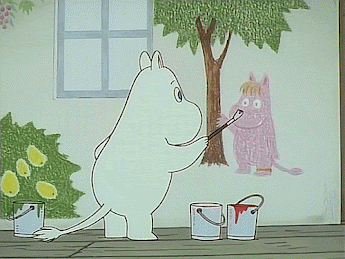Carthasis
The music swells. There is a flash of a motif, a character’s actions that demonstrate intense longing, hatred, conflict, complexities between relief and bittersweetness. There it is. The first tear, the first expanding of the heart. Catharsis.
Catharsis is achieved through tragedy and dynamic characterization that parallel the harsh obstacles of real life. The fictional human expression, emotional output, and universal themes provide empathy and an antidote for real life.
The scientific analysis of catharsis comes from the innate development of human empathy. One might assume that empathy is purely a feeling, but that feeling of understanding one another has been ingrained chemically into the human brain. Once an emotional scene of media is digested, human brains release “oxytocin, a neuropeptide that evokes empathy.” In the 2007 study at Society for Neuroscience found empathy relieved stress in its prairie vole test subjects—the relief felt from oxytocin(catharsis).
Visual media that exists in literature and film formats provoke an outpouring and purging of emotion.
Literature
Oedipus, an exaggeration of the different facets of life, unknowingly displays an analysis of the worldly characteristics readers possess and the tragedy of destiny. He is a rash protagonist, with foul language and immediate assumptions, “No, certainly; kill you, not banish you”(Sophocles 1143). Without evidence, Oedipus claims Creon defies his power, threatening to destroy their trusting relationship. He mistakes his father, mother, and his past, leading to the prophecy’s fulfillment. Readers will scoff at Oedipus’s commentary and unheeded mistakes; however, underlying the dramatic irony is the realism of human flaw and misconception. These untold errors are deeply prevalent in the reader’s life, intertwined with the human condition. Aristotle Poetics states that “the main character must be neither evil nor good...one whose misfortune is brought…by some error”. Fundamentally, Oedipus as a tragic hero is sinful yet pure, the balance of human nature. Sophocles utilizes this emotive highlight of flaws to create a greater emotional attachment to Oedipus in his audience. Readers tend to connect with those who fumble and fall, a replication of themselves when faced with obstacles. They picture themselves in the broader thematic characterization of Oedipus’s humanity, whose theme of miscalculation and describes a universal truth of human error. This is also demonstrated in East of Eden. Caleb has the greatest power in the eyes of the reader as he is flawed, but through his flaws does he discover the capacity he holds of the control of his future. Readers are less able to relate with Aron, as his complete denial of sin is unattainable and irrational to the integral human imperfection. Empathy is concluded by the process of dynamic characterization, the connection of error to Oedipus’s fate, which in turn, reinforces the play’s truthfulness evoking greater sorrow in readers. The sorrow is then perceived by readers as motivation for not being controlled by fate, to take greater action in their lives—catharsis.
Additionally, in Saving Sourdi, the ambiguity of Nea’s character development demonstrates her painful understanding of growth. “But I have no magic powers”(Chai). There exists a consistent theme of growing up; the short syntax structure of the declarative statement reinforcing concrete truths. The understanding of the uncontrollable unknowns in the world illustrates a pinpoint of growth that all readers have experienced. By applying the persistent maturity of people, Chai can create certainty in the reader’s empathy for Nea’s revelation.
Film
(about 2 min long, recommended to watch before reading on)
The Farewell explores Billie’s understanding of her grandma’s cancer diagnosis, cultural disparities, and family through the lens of an American-born Chinese. Billie’s dialogue with her mother represents something deeply personal to those spread between two cultures. As a second-generation immigrant, the seemingly jarring but caring attitude of her mom, “And everyday she has to look at you with that sad-looking face. That’s not nice for anybody”, directly imitates cultural influences many Asian Americans encounter. The scene underlies an Asian cultural tradition of family protection and filial piety in conflict with and often overshadowing personal gain. As Billie’s mom implies, Billie should sacrifice her feeling of hopelessness to put on a pleasant facade for her grandmother, to initiate a hopeful atmosphere for her grandmother’s wellbeing.
For the Asian American audience, a story intertwined with the nuances of its culture is told. It encapsulates the truth of reality: tragedies, death, reflection. Those who the movie’s characters resemble will discover catharsis in a reenactment of their own lives. Through the actions and conflicts Billie struggles in, the audience members perceive a secondary experience, one that is isolated from their internal trauma and witness it through a screen. The passiveness of fiction and empathy elicit clarity and conclusion to problems present in their lives outside of the movie theater.
Even if the viewer is not familiar with Chinese culture, intrinsic themes appear within the minute details. The thematic targets of solitude and belonging in a world heavily confined into stereotypes, as Billie states, “I was confused and scared constantly.” appeals to the inner vulnerability of every human. Whether it be dealing with the loss of a beloved family member, moving, feeling lost in the world, at its core, the fictional story demonstrates a recollection of the tangible relationships and family the audience has. It offers a reflection on the emphasis of personal morals and goals for the audience to ponder on.
Literature and films provide an overwhelming recognition of humanity through the fundamental exploration of identity and overlapping themes of universal truths prevalent in real life. The audience experiences catharsis because we are all humans, the writers, producers, readers, viewers living together in the same world, encountering similar challenges and self-discovery.







Comments
Post a Comment